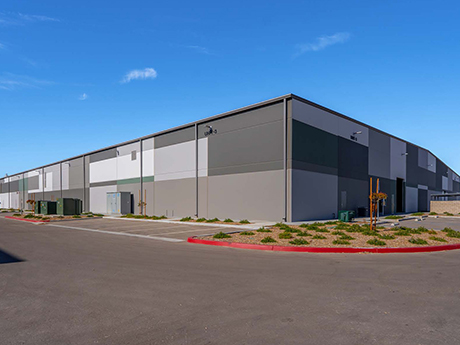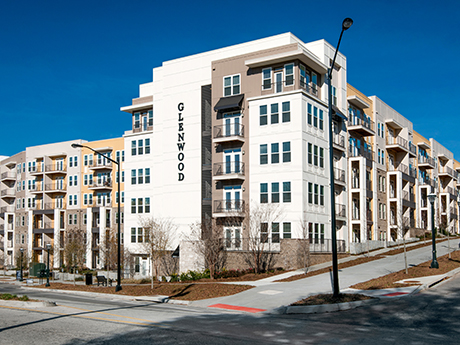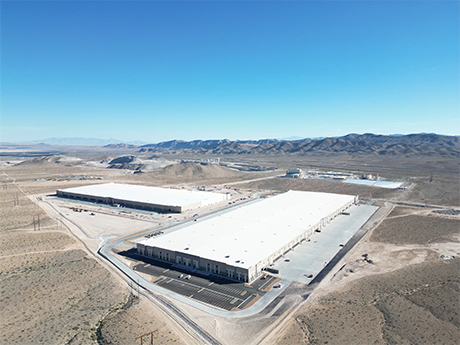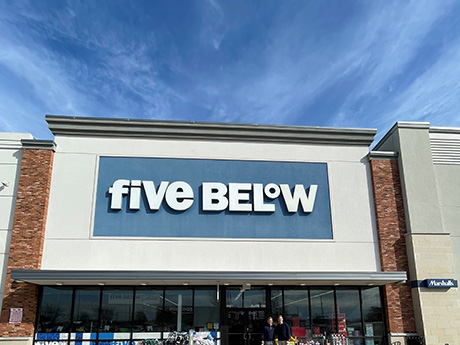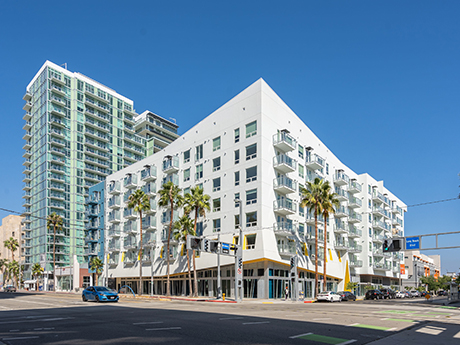— By Joseph W. Brady, CCIM, SIOR, President, The Bradco Companies — A population boom has brought houses, companies and retailers to the High Desert also known as the Mojave River Valley. The “High Desert” used to be a term that referred to one area: the northern region of San Bernardino County that is beyond the Cajon Pass. As such, many other “High Desert” popped up, including the nearby Joshua Tree Area, in addition to namesakes in Arizona, Nevada and Oregon. That led this particular area to be rebranded as the Mojave River Valley, notes Joseph W. Brady, president of The Bradco Companies in Victorville, Calif. As a long-time, 35-year resident, of the Mojave River Valley, he is the longest serving commercial broker in the region. What is the current state of commercial real estate in the Mojave River Valley? Retail is rather steady, with each of the cities — Apple Valley, Adelanto, Hesperia, and Victorville — all seizing new opportunities for commercial. Sprouts grocery stores (remodel of the former Toys”R”Us) are coming into Victorville and the Town of Apple Valley. We also have many smaller national tenants that continue to expand in the retail marketplace. Retail vacancy levels continue …
Market Reports
— By Jon-Eric Greene, Colliers — Hawaii has historically been home to many of the nation’s top grossing retail locations (as measured by gross sales), including one of the highest grossing regional malls in Ala Moana Center, and the world-famous retail street, Kalakaua Avenue in Waikiki. However, since COVID shutdowns, Hawaii retailers and shopping centers have struggled to recover. While the tourism and hotel markets have bounced back, an important visitor demographic — the international shopper — has yet to return. Tourism is Hawaii’s No. 1 industry, with almost every dollar circulating through the economy tracing back to visitors. In 2019, Hawaii welcomed a record 10.4 million visitors. However, in 2020, arrivals plummeted to 2.7 million visitors due to the pandemic. The state experienced rebounded visitor numbers in 2021 and 2022 of 6.8 million and 9.2 million visitors respectively and expected to end 2023 with 9.3 million visitors. The visitor profile has changed dramatically, however, impacting many retailers and shopping centers. In 2019, around 3 million visitors were international, with over 50 percent (1.58 million) coming from Japan. In 2022, only 900,000 of Hawaii’s 9.2 million visitors were international, including just 192,500 Japanese. So, while overall visitor counts to Hawaii …
By Sandy Schmid, director of acquisitions and development, StarPoint Properties In the fast-paced world of commercial real estate, foresight is as valuable as bricks and mortar. Despite whispers of distress on the horizon for the Lone Star State in 2024, the multifamily real estate market is ablaze with potential. Texas is one of the hottest destinations for developers and investors, and the strategic play is to not just weather the storm, but rather to ride it to success. Recent predictions of multifamily distress starting in the latter half of 2023 have certainly raised eyebrows and fueled speculation. However, predicting the Texas real estate market is akin to forecasting a Wild West shootout — a challenging task given the state’s history of resilience and its ongoing growth. Texas has consistently proven its ability to rebound from economic challenges, and current indicators suggest that the multifamily sector is poised for sustained growth. A Growth Powerhouse One factor supporting the optimistic outlook is the impressive trajectory of Texas’ GDP growth. The state saw a notable increase in its GDP over recent years: 5.7 percent growth in 2021, 2.7 percent in 2022 and 3 percent in the first quarter of 2023 alone. This data compares …
In recent years, Atlanta has become a top choice for corporate relocations, causing double-digit multifamily rental rate growth, an increase in pricing and a general benefit to the industry as a whole. In 2021, rental rates rose at an average of 11.7 percent and last year that number reached 16.8 percent. As a result, from 2021 through much of 2022 the metropolitan area experienced a record amount of investment activity, with $20.8 billion and $14.8 billion trading hands, respectively. During the first six months of 2023, however, transaction activity slowed and began returning to more typical levels, dropping approximately 82 percent year-over-year from those highs. Much of the decline in transaction activity experienced today can be accredited to the Federal Reserve’s sizable interest rate hikes over the past 18 months, resulting in a significant expansion in cap rates and a divide between buyer and seller pricing expectations. During the first half of 2023, approximately 54 transactions occurred, compared to 172 recorded for the same period last year for assets valued at $5 million or more. Much of this activity was driven by smaller deal sizes and private capital as institutional investors embrace a “wait and see” agenda in hopes of …
— By Paul Sweetland, SIOR, Vice Chairman, Colliers Doherty Industrial Group — Throughout 2023 we were often asked if the Las Vegas industrial market had “missed the memo” on the slowdown since other western markets were experiencing a slowdown that we had yet to see. With record under-construction numbers and net absorption numbers being on pace to finish the year with the second highest total of the last five years, Las Vegas didn’t appear to be slowing down. However, there are certain sectors that show initial signs of a pending change. Land Sales: Land sale transactions have seen a 75 percent drop from the prior year. Peak land pricing was $36.00 per land square foot in the summer of 2022, and by the fourth quarter of 2023 it had dropped 25 to 35 percent as demonstrated in the limited closings that occurred. Although lease rates continued to increase, developer underwriting had seen significant changes in exit CAP rates along with debt, equity and construction financing due to an unstable interest rate environment with the Feds continued rate increases at the fastest pace in 40 years. Lower land pricing or significant lease rate increases are going to be necessary for the …
By John Faur, Newmark Zimmer The Kansas City industrial real estate market has been on a historical run since 2020 with over 40 million square feet of inventory added in that time frame. This run of new construction has catapulted Kansas City to the 15th largest industrial market in the country by square footage, despite only being the 31st largest MSA by population. During most of this period, the strong market dynamics which exist in Kansas City, such as strategic highway infrastructure, a centralized location, four Class-1 railroads, availability of bulk land sites and an active development community, were further amplified by the low-interest rate climate and record levels of tenant activity. The continued high pace of speculative industrial construction starts in 2022 positioned 2023 to experience a healthy amount of new deliveries, with almost 8 million square feet of speculative industrial space delivering to the market. While the financial markets presented opportunity during this run of growth, continuous rate hikes in 2023 created challenges that resulted in a significant decrease in year-over-year speculative construction starts (3.5 million square feet of speculative construction has occurred year to date in 2023 as compared with more than 13 million square feet in …
By Ryan Johnson and Tyler Grisham, managing partners and market leaders, SRS Real Estate Partners Those who live and work in Dallas-Fort Worth (DFW) should be grateful for the metroplex’s strong fundamentals. There are a lot of macro-level factors that are out of whack and hurting the commercial real estate business, but there are also a lot of macro factors working in favor of DFW that not many major markets in the United States can claim. Thinking glass half-full, DFW has enjoyed exceptional growth in employment, housing and population over the last decade. According to the U.S. Census Bureau, DFW now boasts nearly 8 million residents, which makes it the nation’s fourth-largest metropolitan area. According to the Dallas Regional Chamber, 14 major companies relocated to North Texas in 2023 — Kelly Moore Paint Co., Inbenta, McAfee Corp., Frontier Communications and West Shore Homes, among others. Thinking glass half-empty, DFW has sky-high construction costs, the highest interest rates in recent memory, highest exit cap rates/lowest valuations in recent memory and just a general market mentality that causes developers, banks and investors to exercise great caution. Active Segments, Trends Given these challenges, it may be surprising that there are retailers that are …
For the past decade, the inventory of industrial space in the Greater New Orleans market has not been large enough to meet demand. Comprising mostly older product that would be considered Class B or C in more populous markets, New Orleans-area warehouses have an overall vacancy rate of less than 2 percent. The demand has resulted in rising rental rates. Development of new product is warranted, but a combination of factors has prevented new projects from being built. Finally, in 2023, despite increased construction costs, high insurance costs and rising interest rates, projects are underway that will accommodate the demand in a market that is long overdue for new, modern warehouse product. Despite having all the ingredients to be a major industrial market, including one of the country’s largest port systems, warehouse infrastructure in New Orleans is dated, mostly due to a lack of suitable land for development. Institutional ownership and investment here is limited to select groups that, while chasing higher yields, took the time to learn the market’s dynamics and build local relationships. Historically, as brokers and tenants bemoaned a lack of product, national developers were reluctant to deploy capital to speculate in an unfamiliar and unproven locale. …
— By Jason Fine, Managing Director, JLL — Situated along the Southern California coast between Los Angeles and Orange County, the City of Long Beach continues to be a strong option for businesses and residents. The city has recently delivered low- and median-income housing, in addition to luxury product, with more of each in the planning stages. This has allowed Long Beach to continue experiencing growth from aerospace, port-related businesses, oil and professional services. A few companies that have recently relocated to Long Beach include Blue Shield, Fluor, Relativity Space, SpinLaunch and Vast. Additionally, the city’s economic development department and newly elected mayor have taken a proactive stance, implementing strategies and marketing the city as a business-friendly destination. While the regional and national office leasing trend is seeing many tenants going to a hybrid model, the Long Beach office market has seen a steady increase in vacancy and rental rates despite no new office building supply being added to the market since the pandemic. For the third quarter, the total Class A and B office vacancy (including sublease space) for downtown Long Beach is at 33 percent, with rents sitting at $2.71 per square foot, per month (full-service gross). Suburban …
Multifamily Investors in Long Beach Navigate Opportunities Amidst Market Adjustments, New Developments
by Jeff Shaw
— By Juan Huizar, President, Sage Real Estate — Nationwide, multifamily sales are declining, while interest rates are rising. Buyers are adopting a patient approach, leading to properties lingering on the market for extended periods. This, of course, is accompanied by noticeable price reductions. Buyers are anticipating further price drops, while some sellers are slowly becoming more realistic in their pricing. Long Beach has perennially attracted multifamily investors with more than 7,500 individual apartment buildings. This is mainly composed of older housing stock, which creates a fertile ground for investors and syndicators. Often regarded as the last affordable beach city, Long Beach — despite being overshadowed by other Southern California communities or grouped with Los Angeles — stands as a significant population and employment hub, ranking as the sixth-largest city in California. Existing apartment sales for properties with five or more units have plummeted by more than 65 percent. Notably, 2021 was an exceptional year due to a confluence of factors, including rising real estate values and a low cost of capital. The current decline is more a reflection of increased capital costs than a trend over the past decade, with some properties selling for less than their 2019 prices. …


